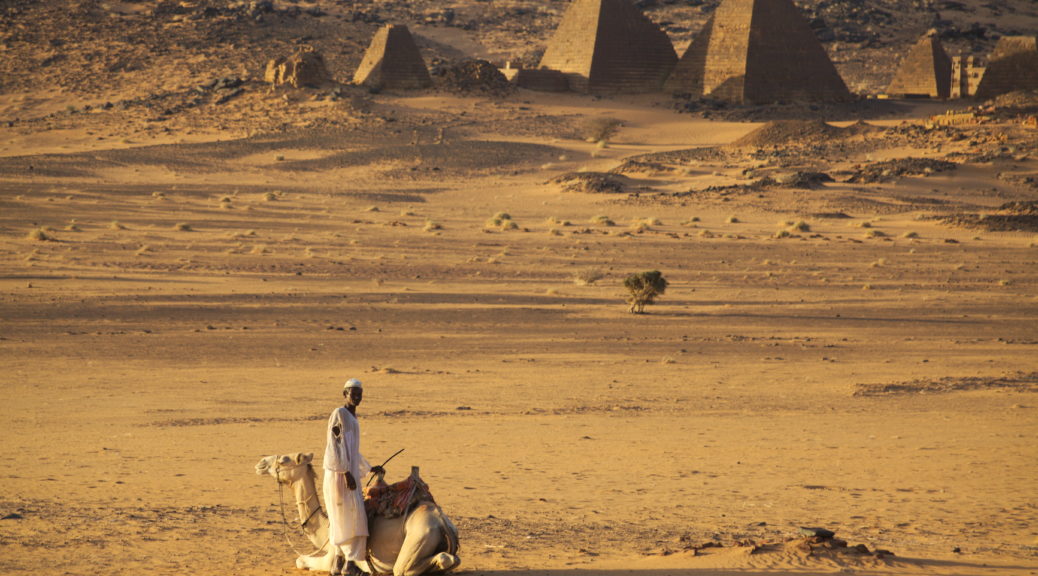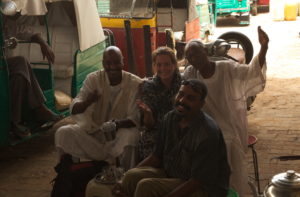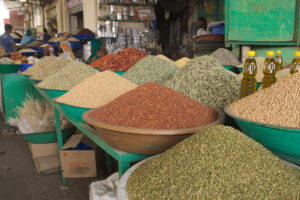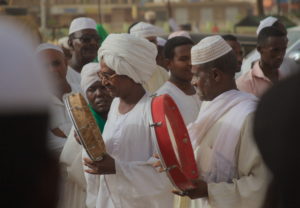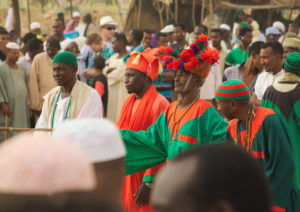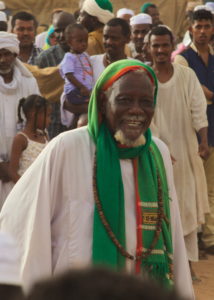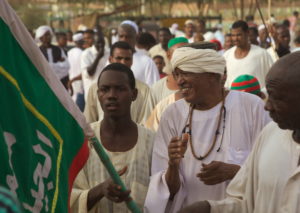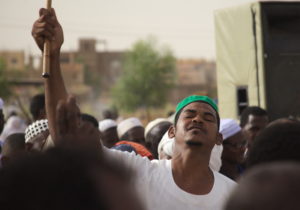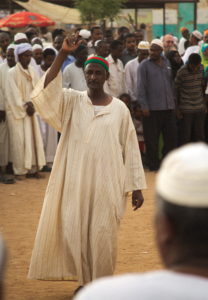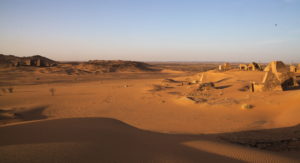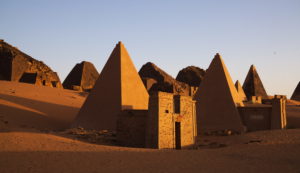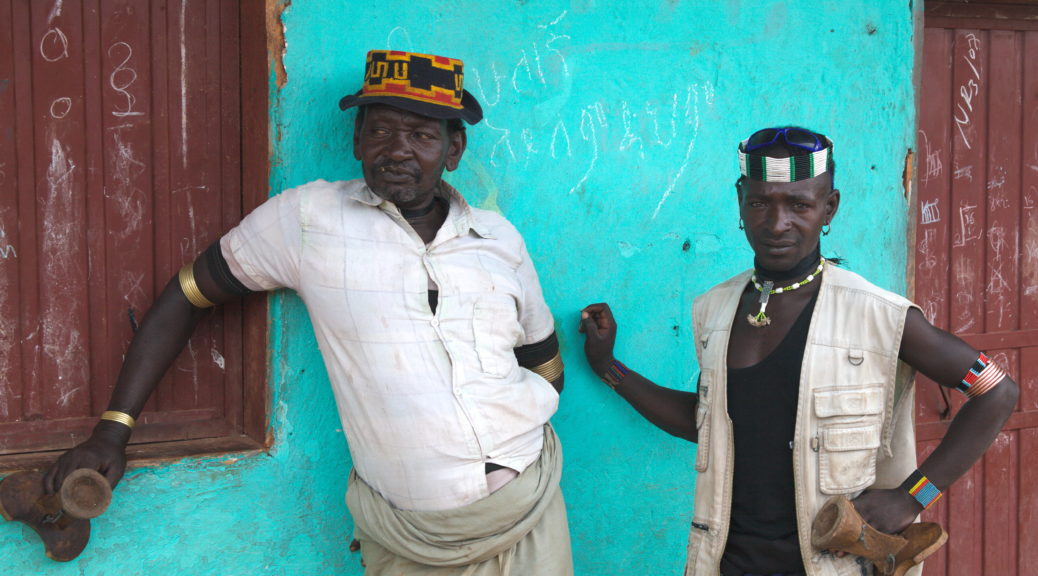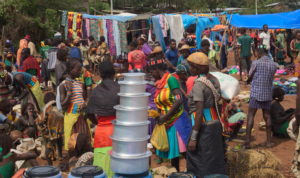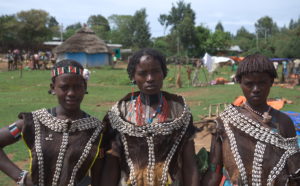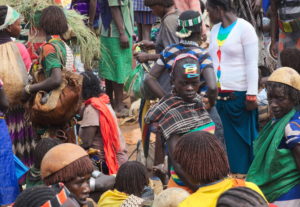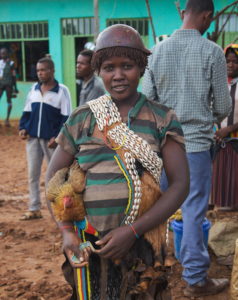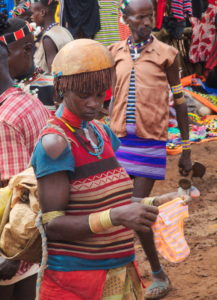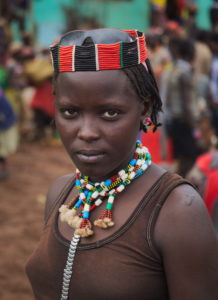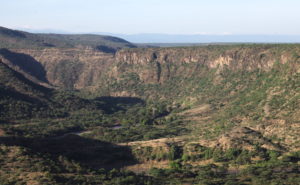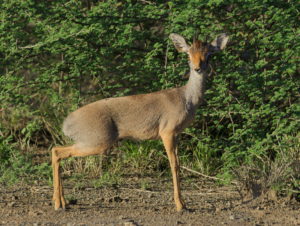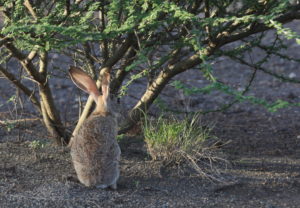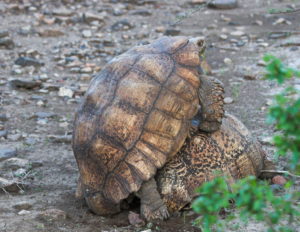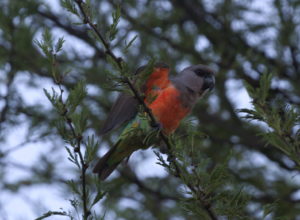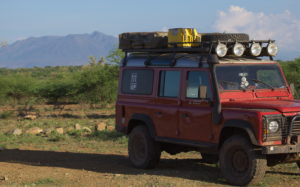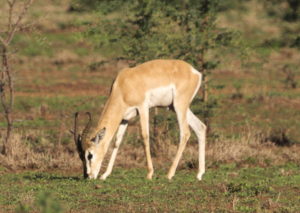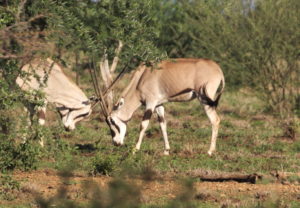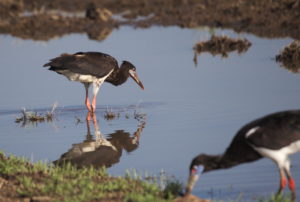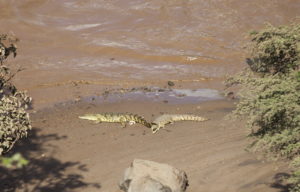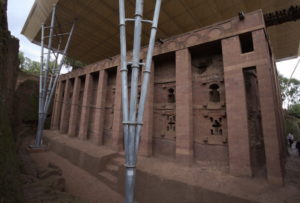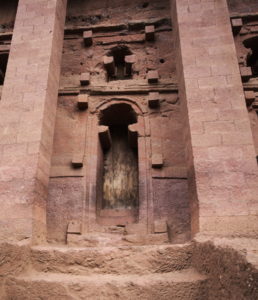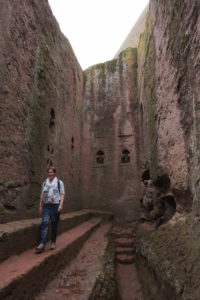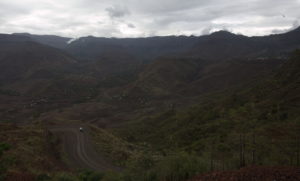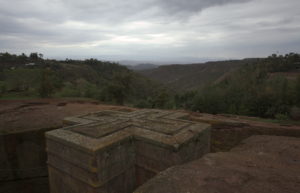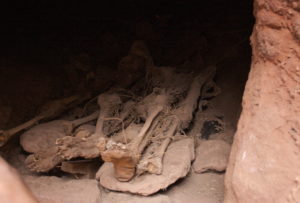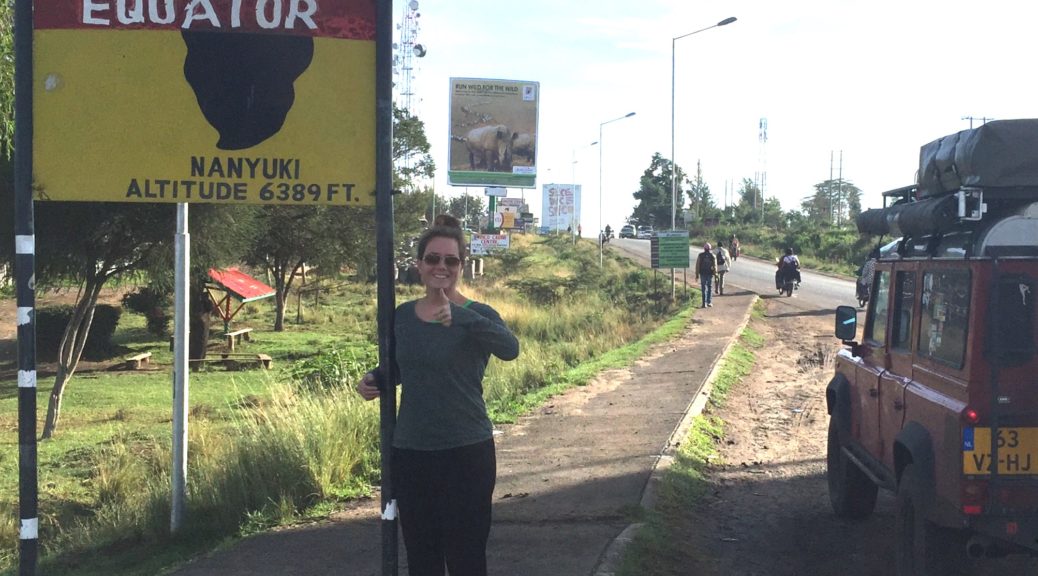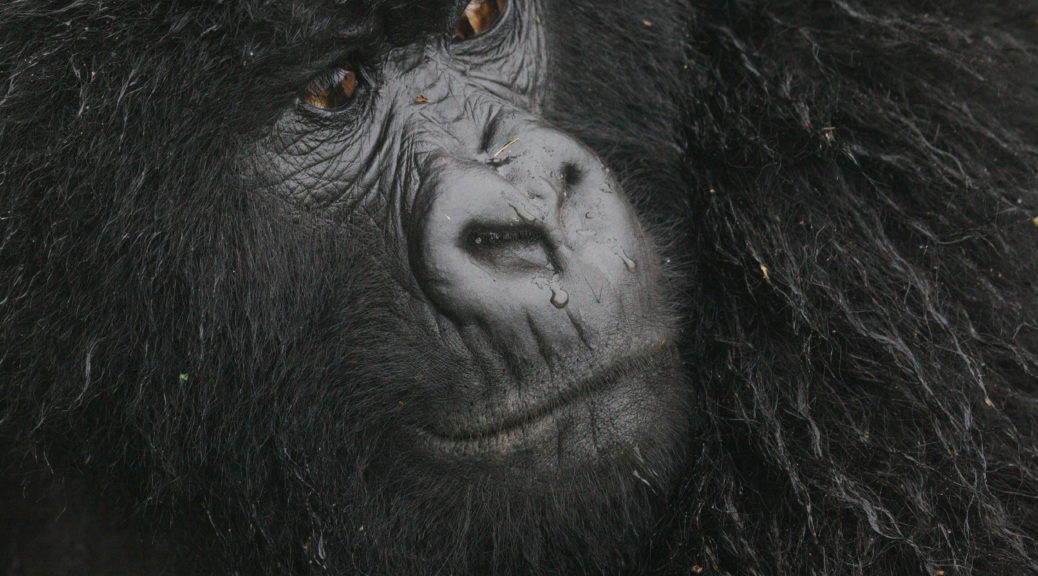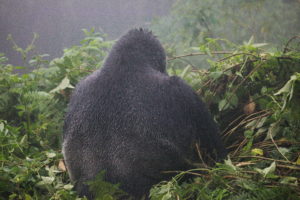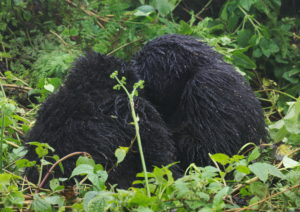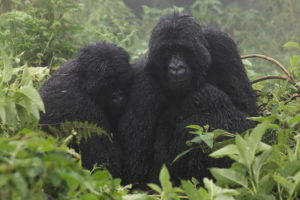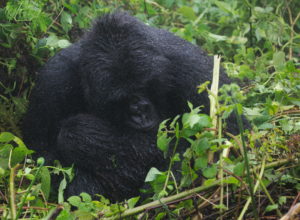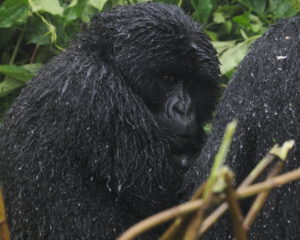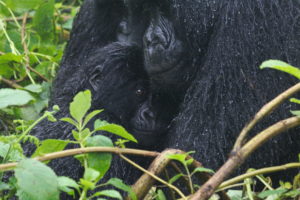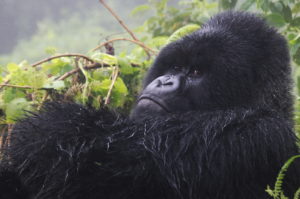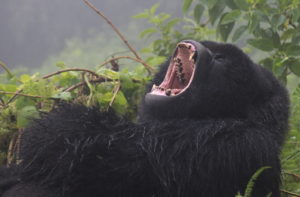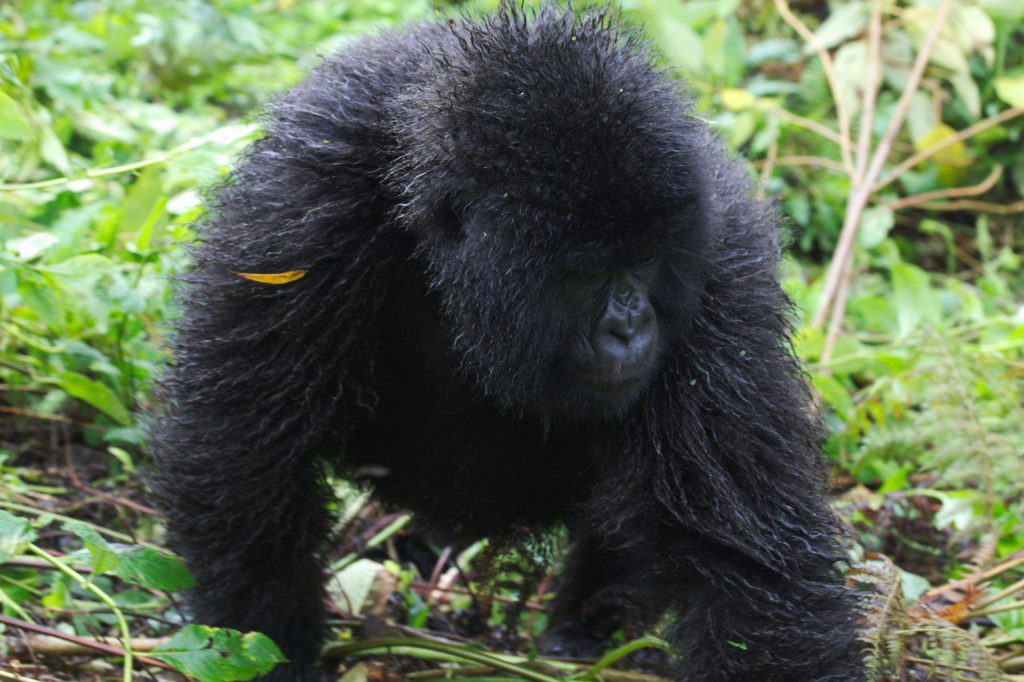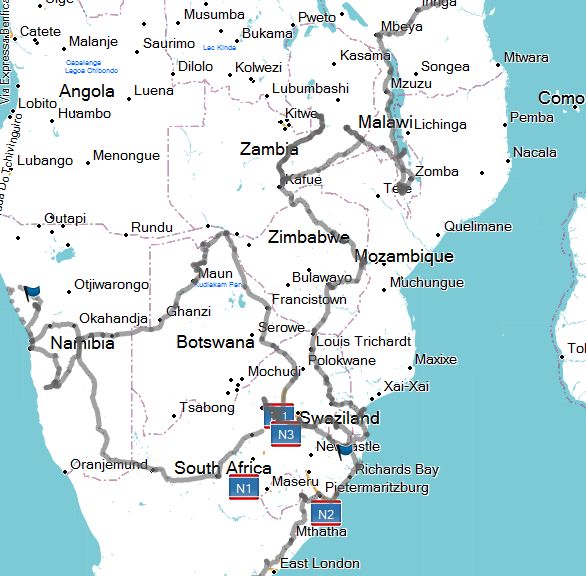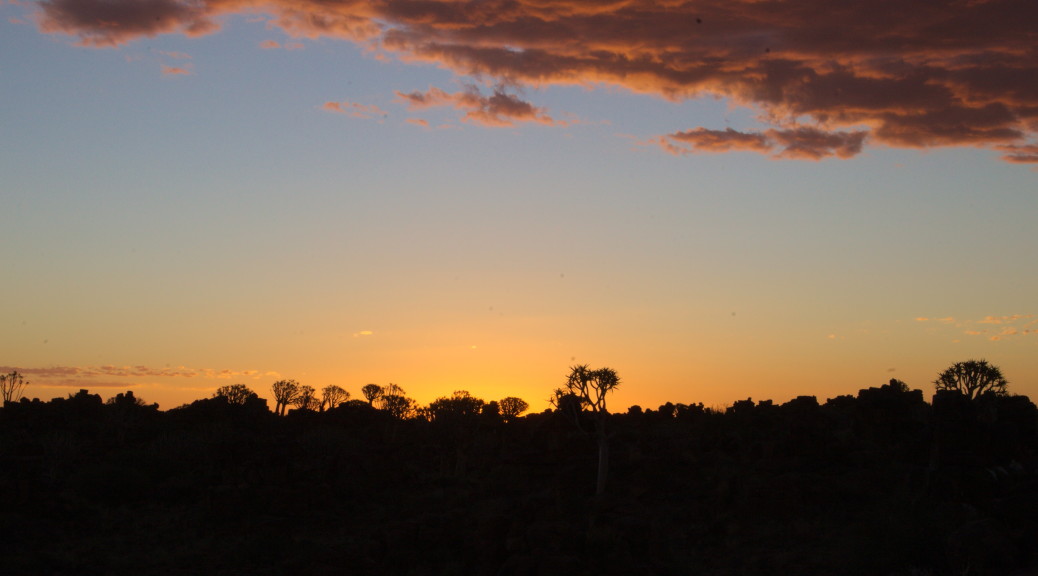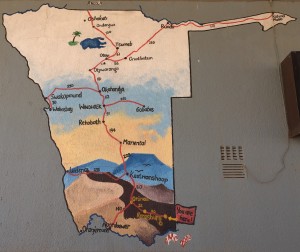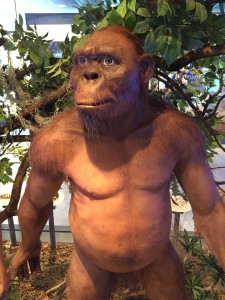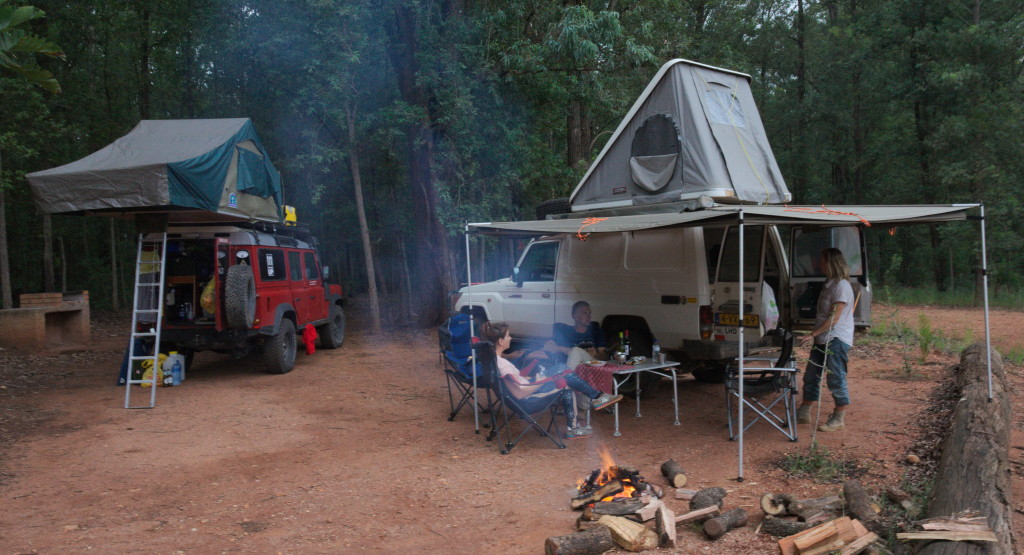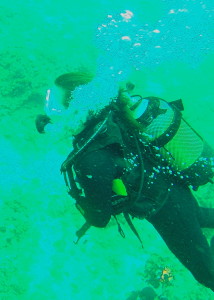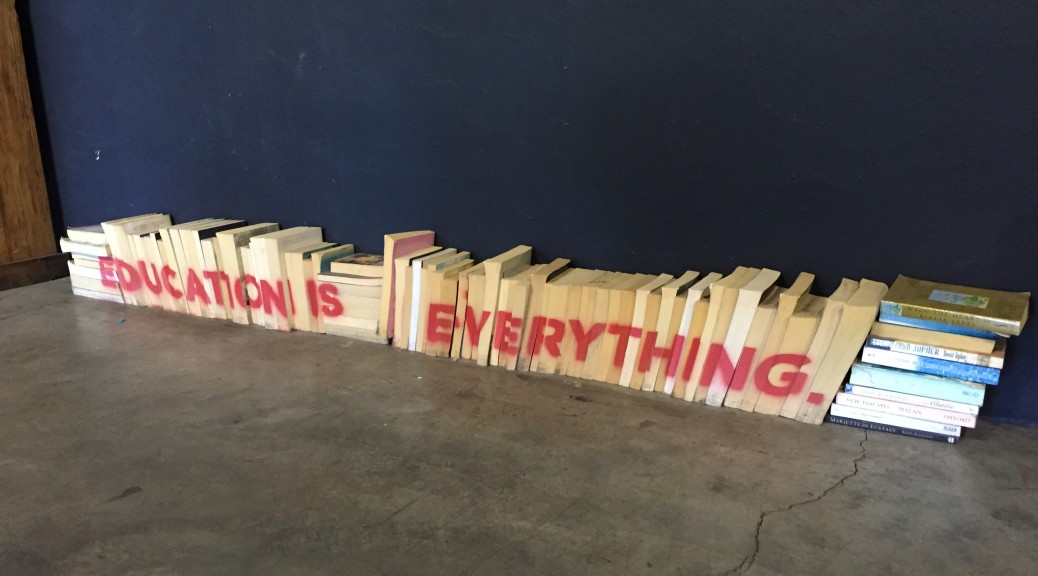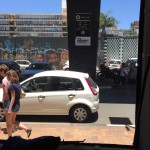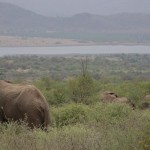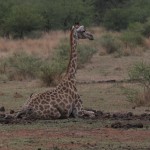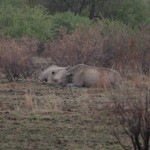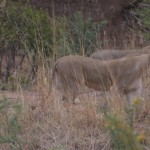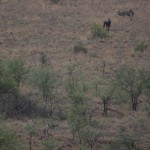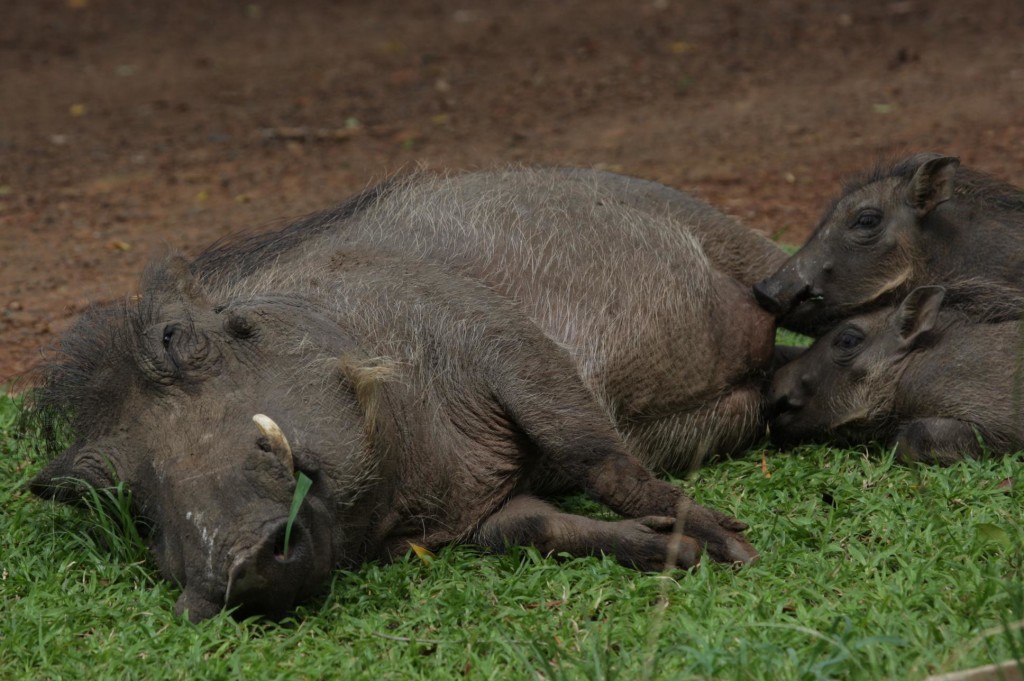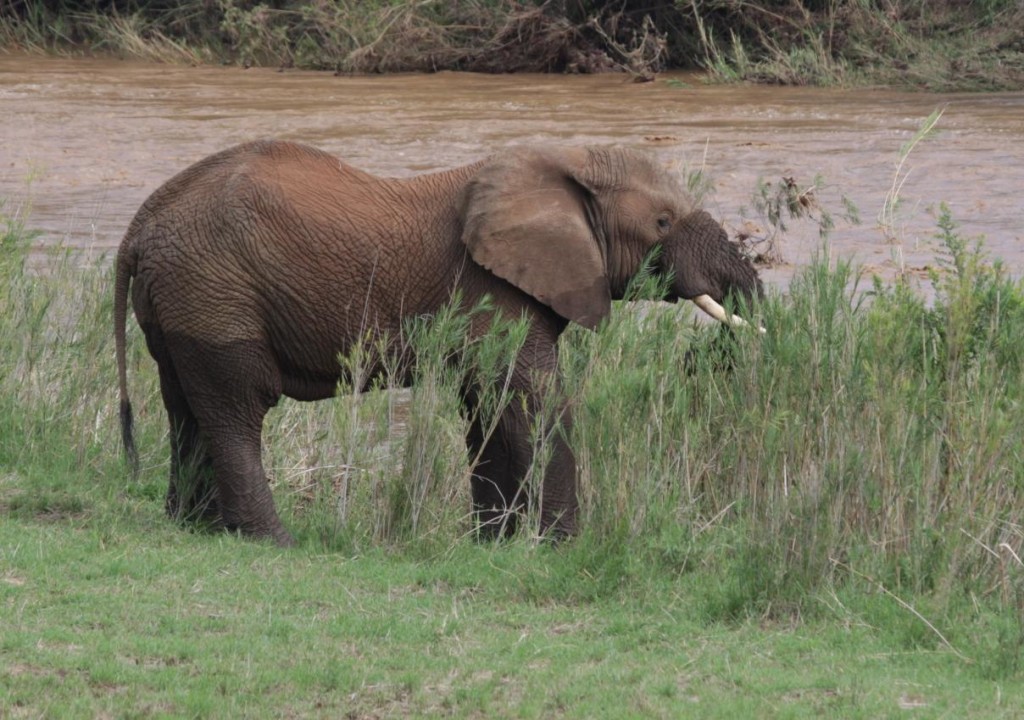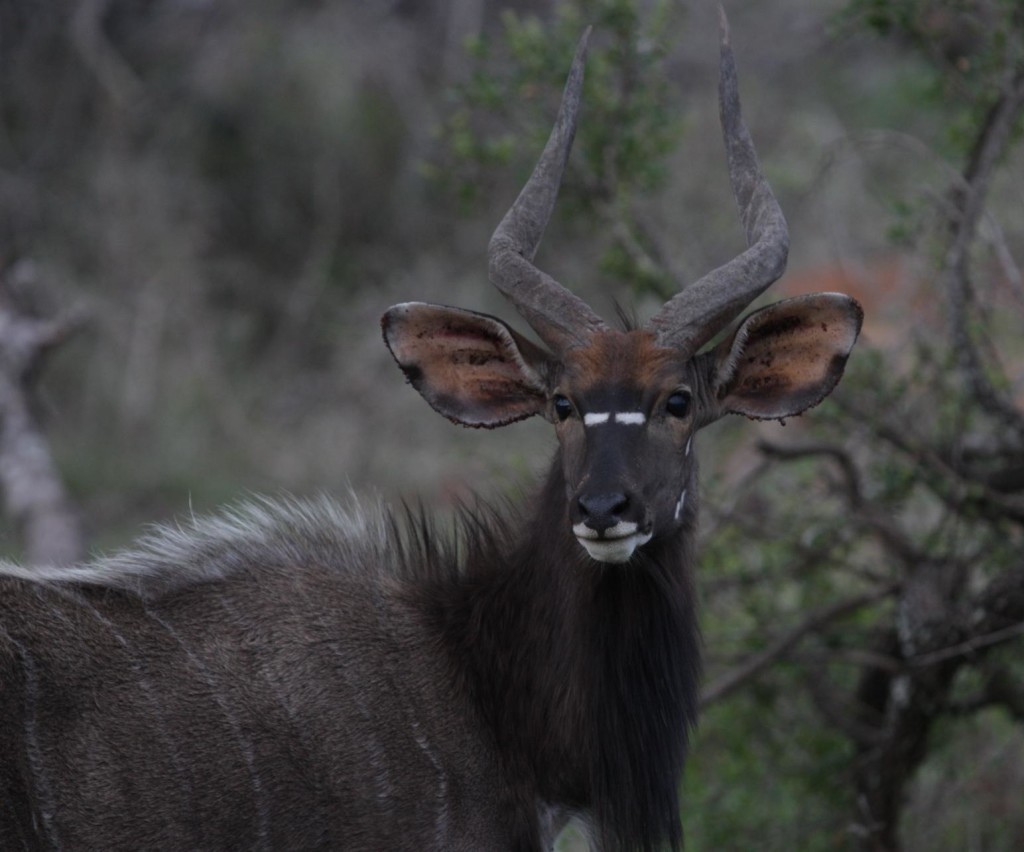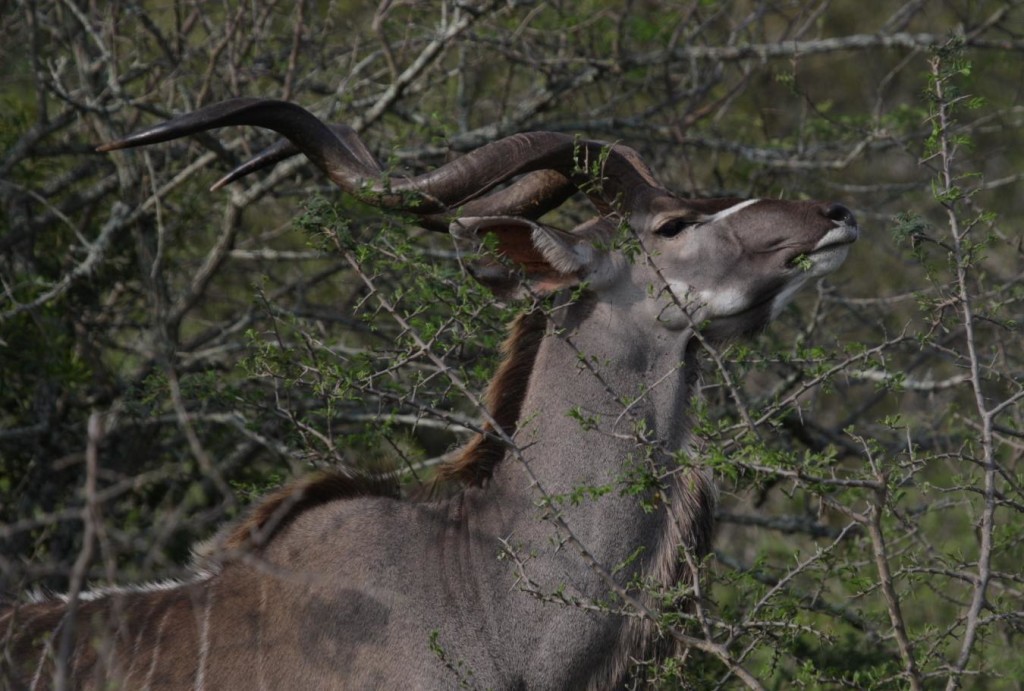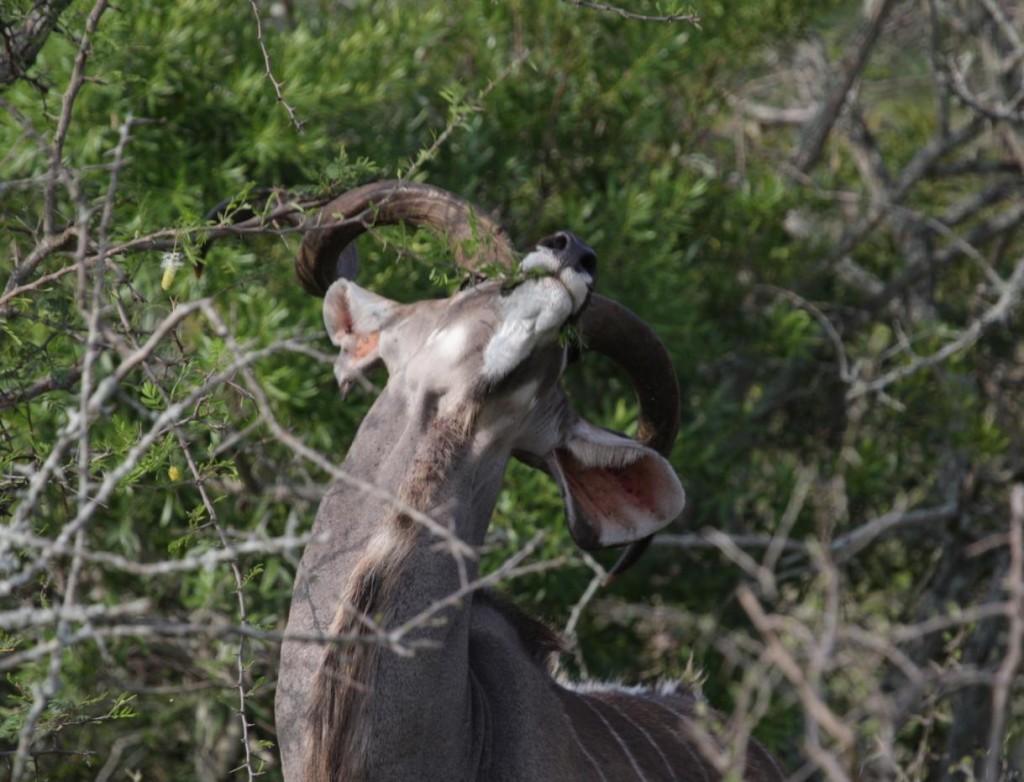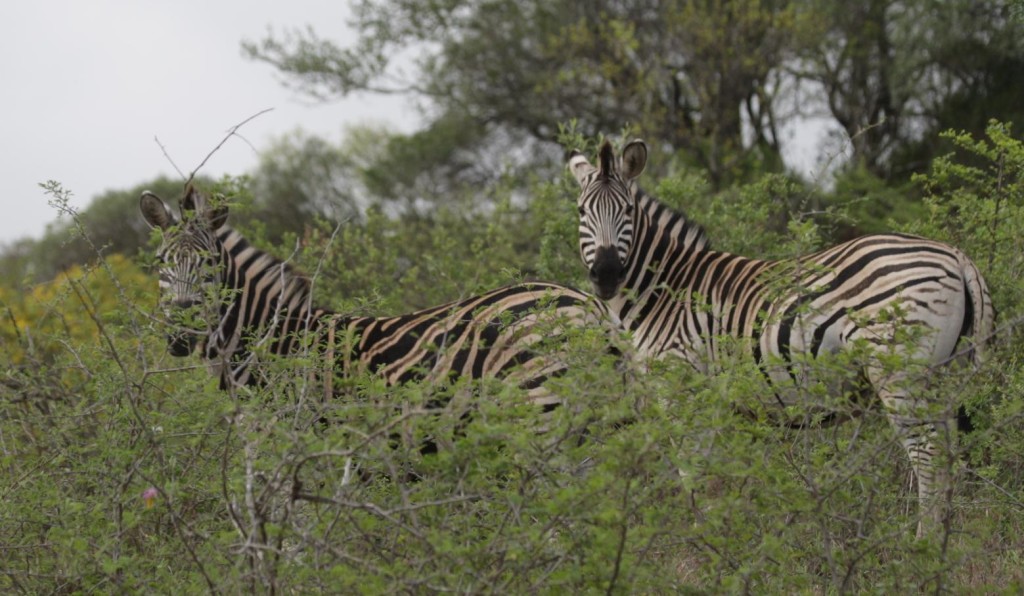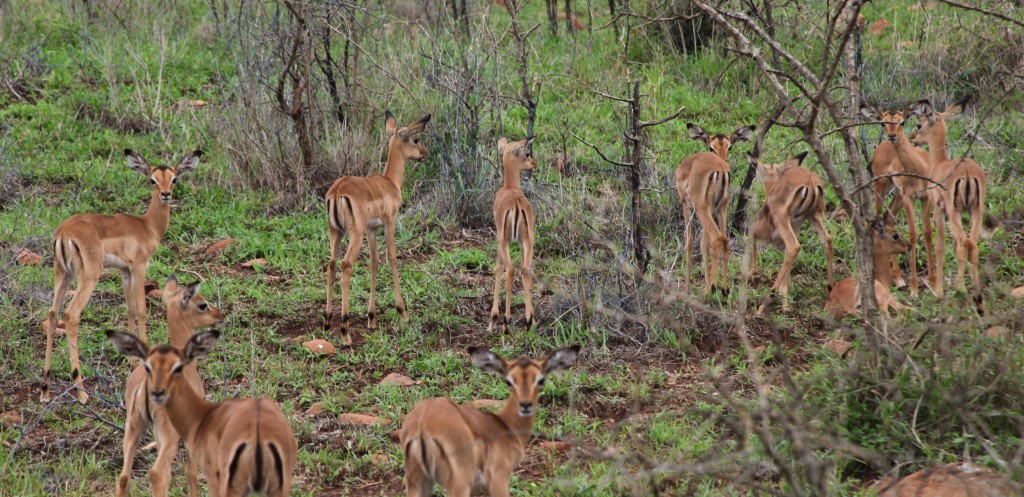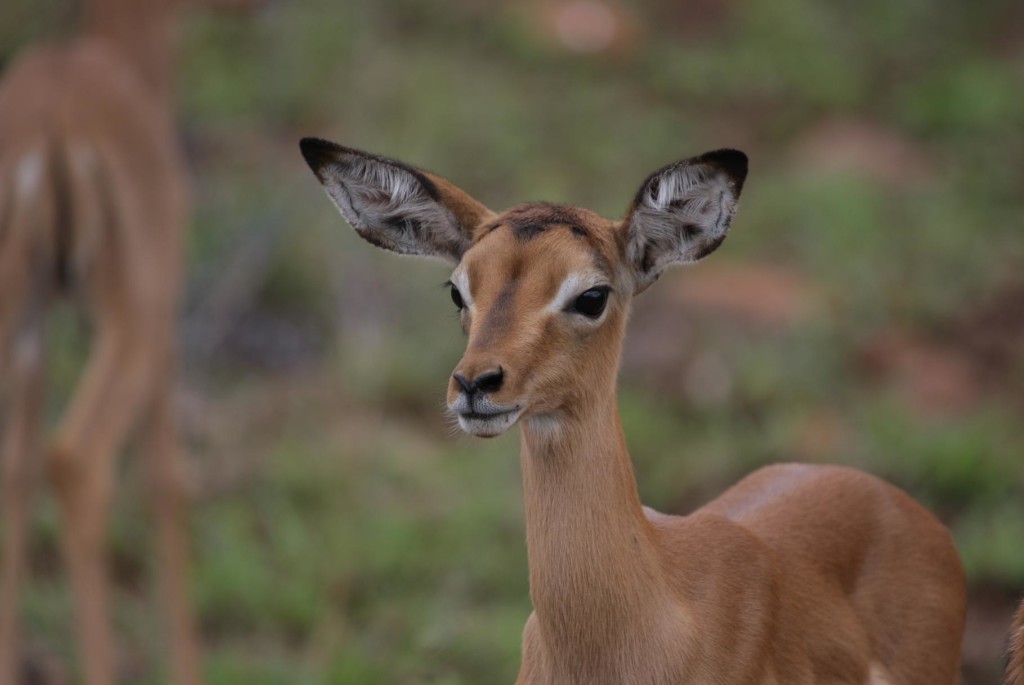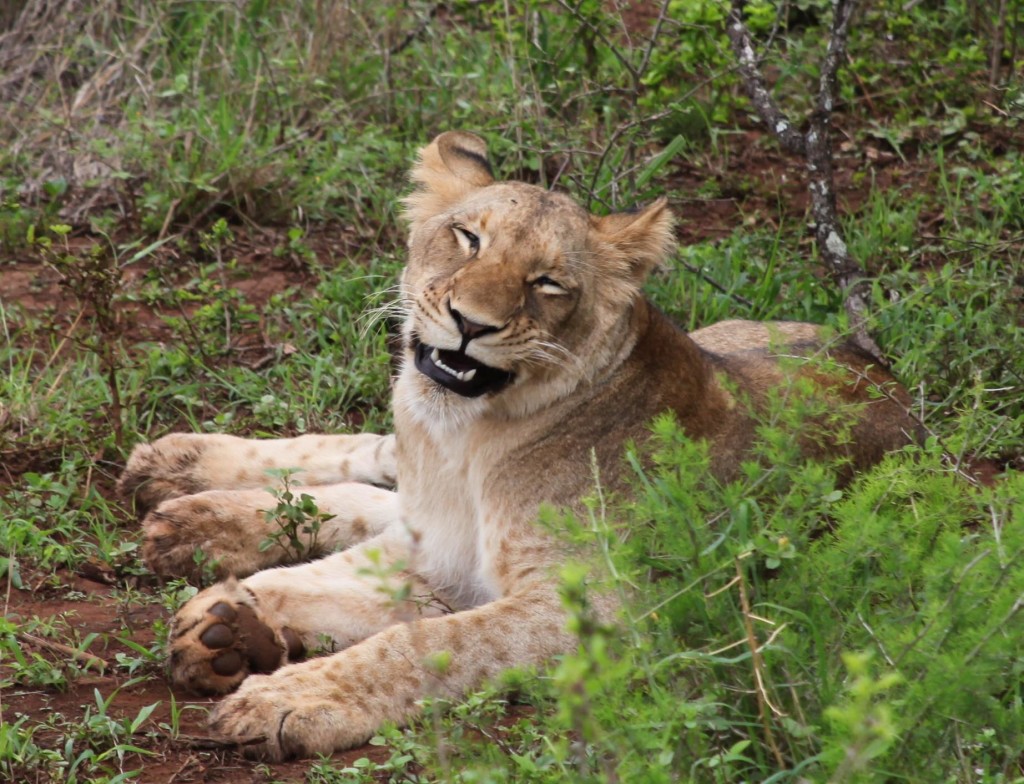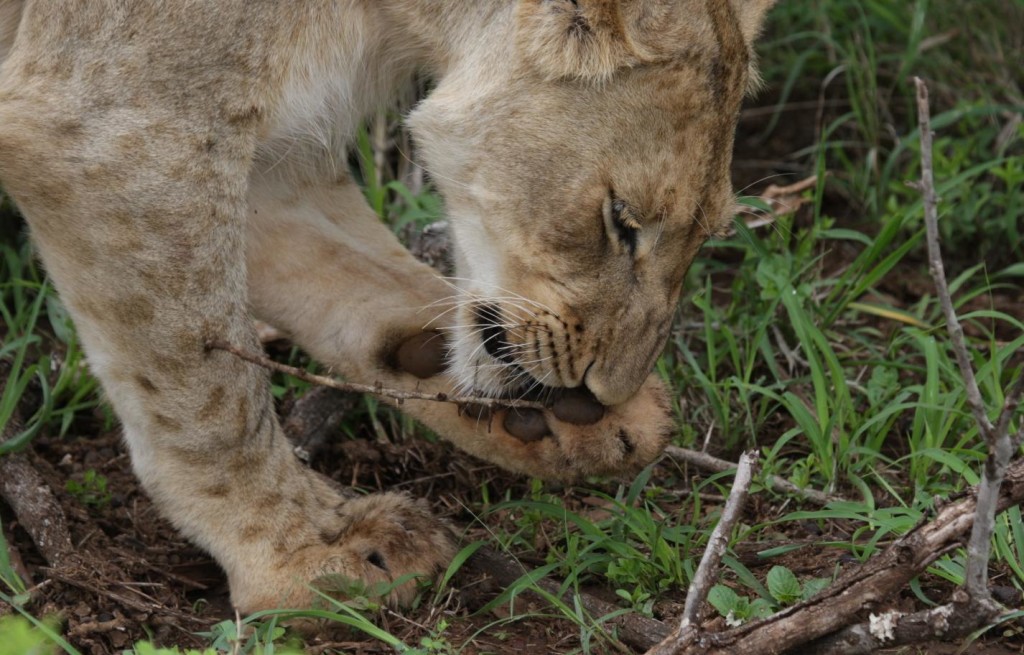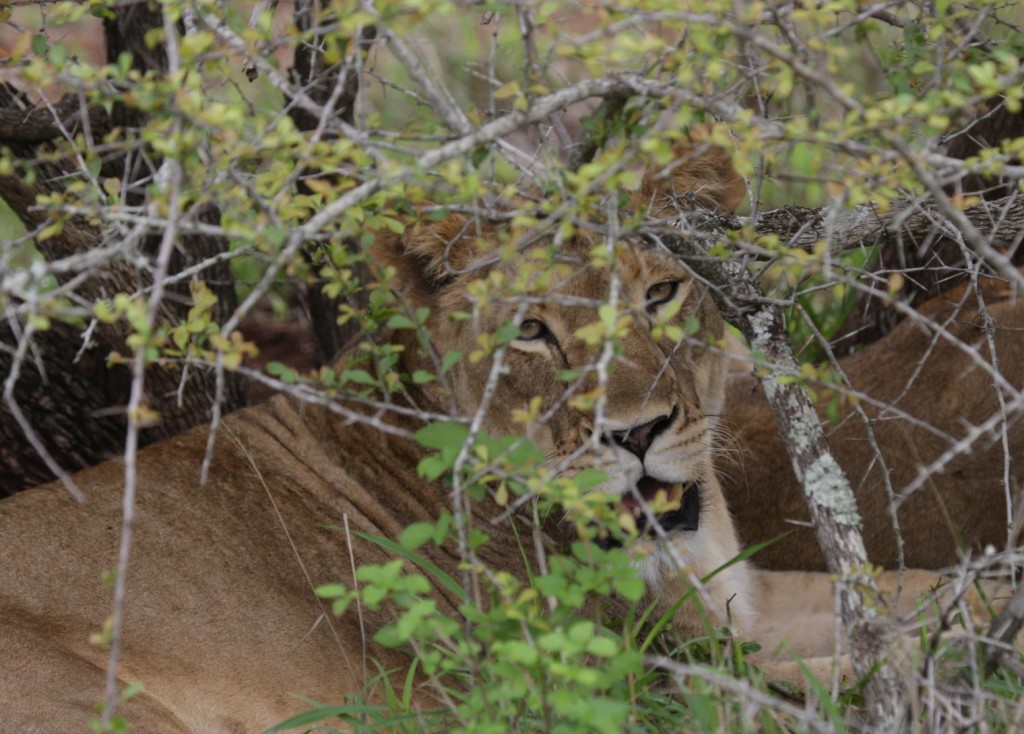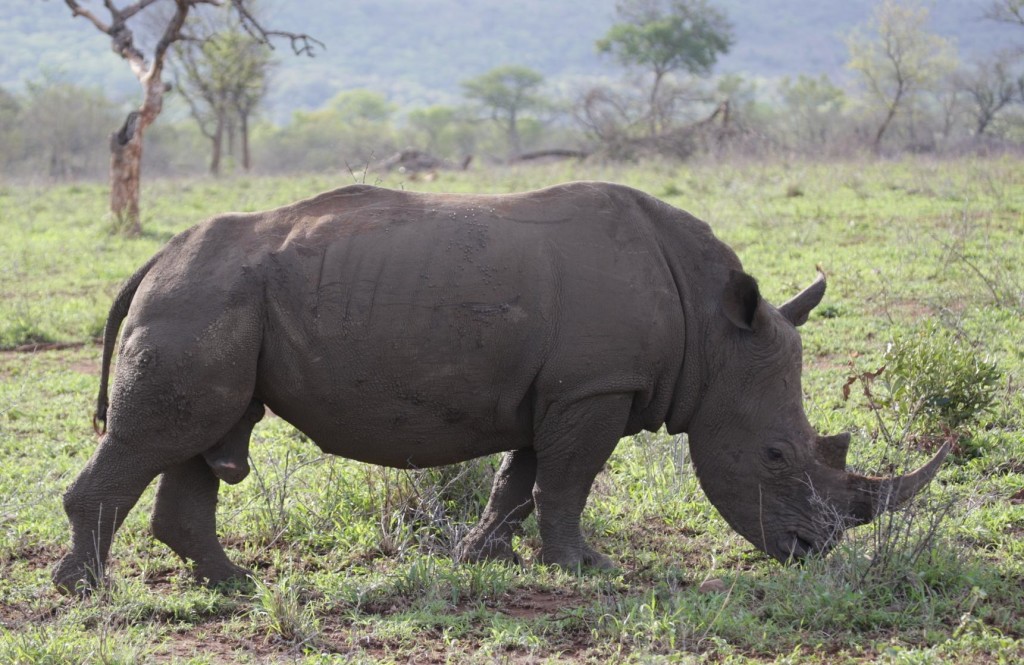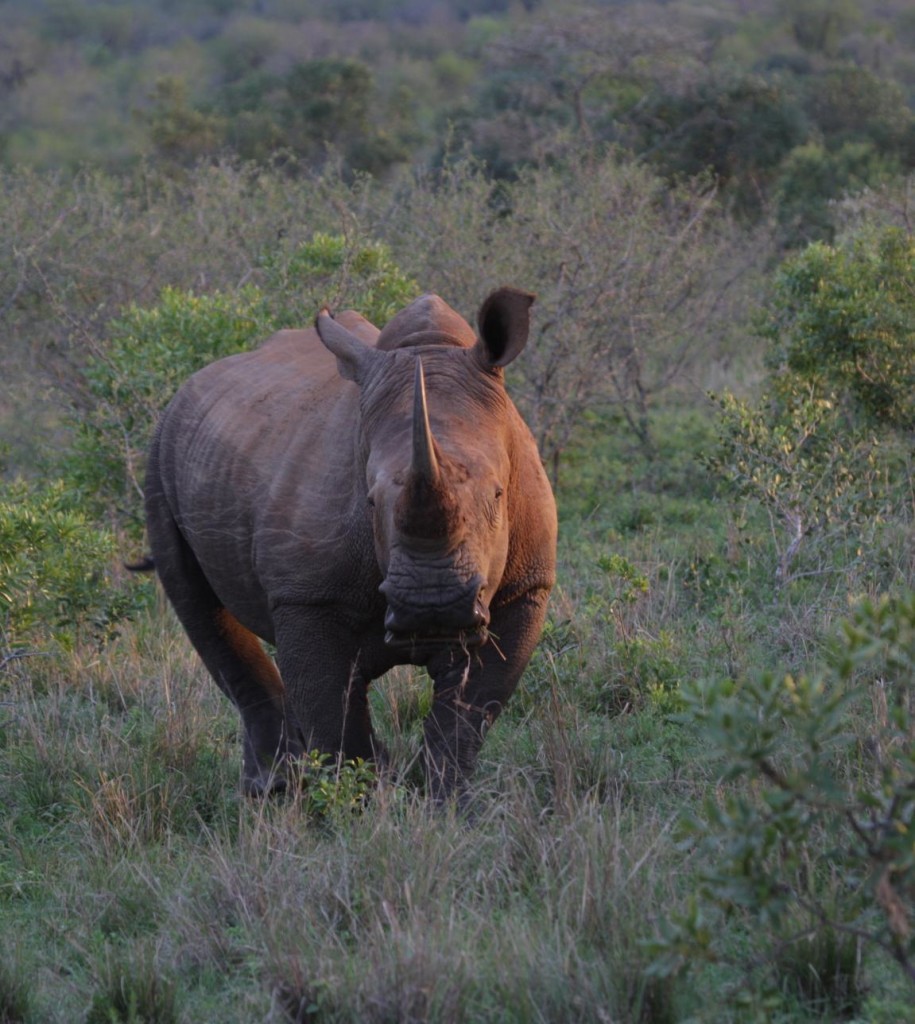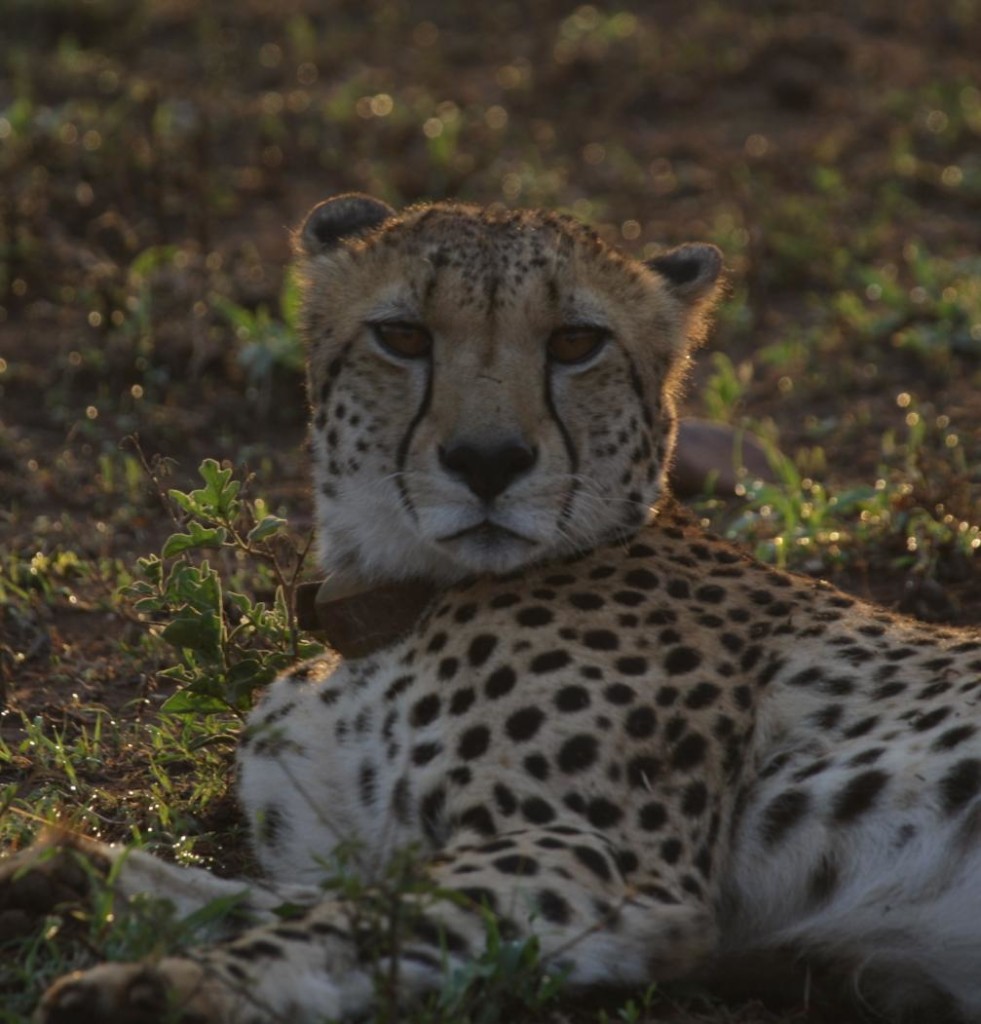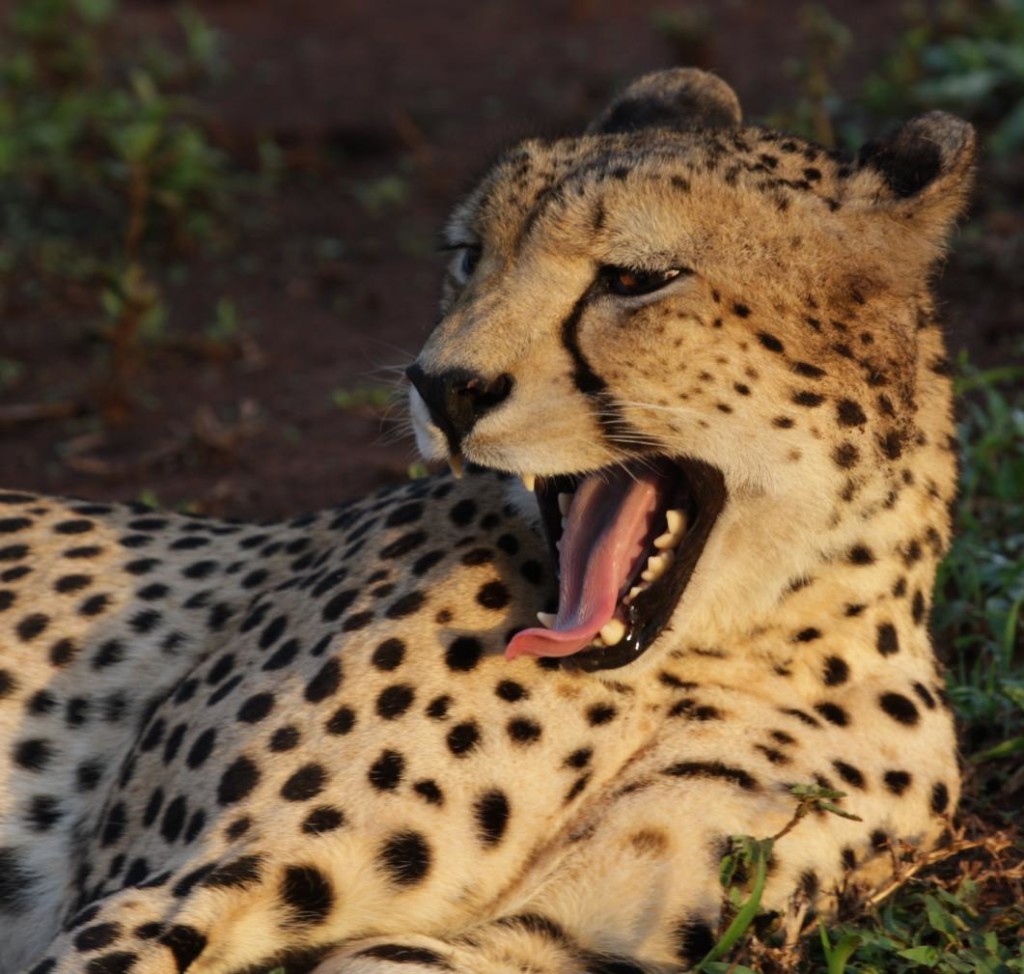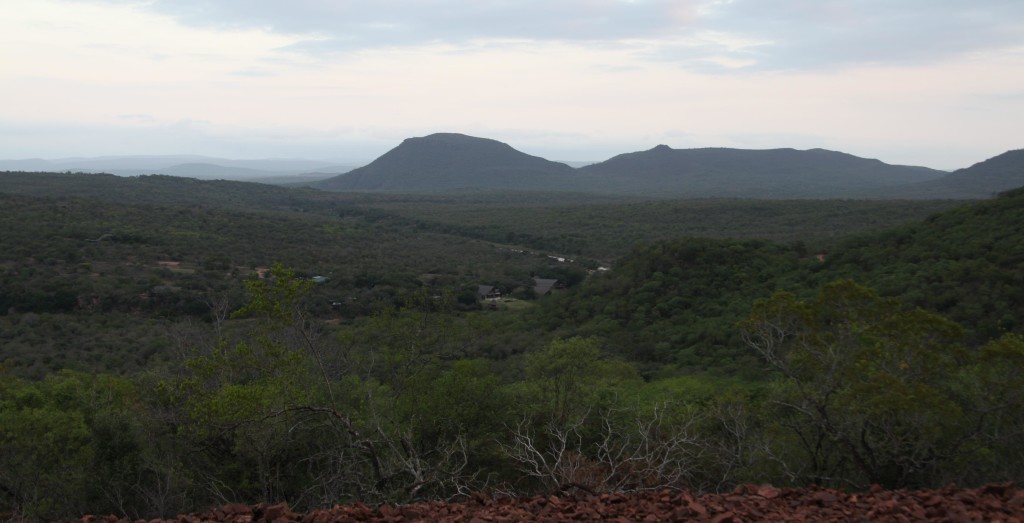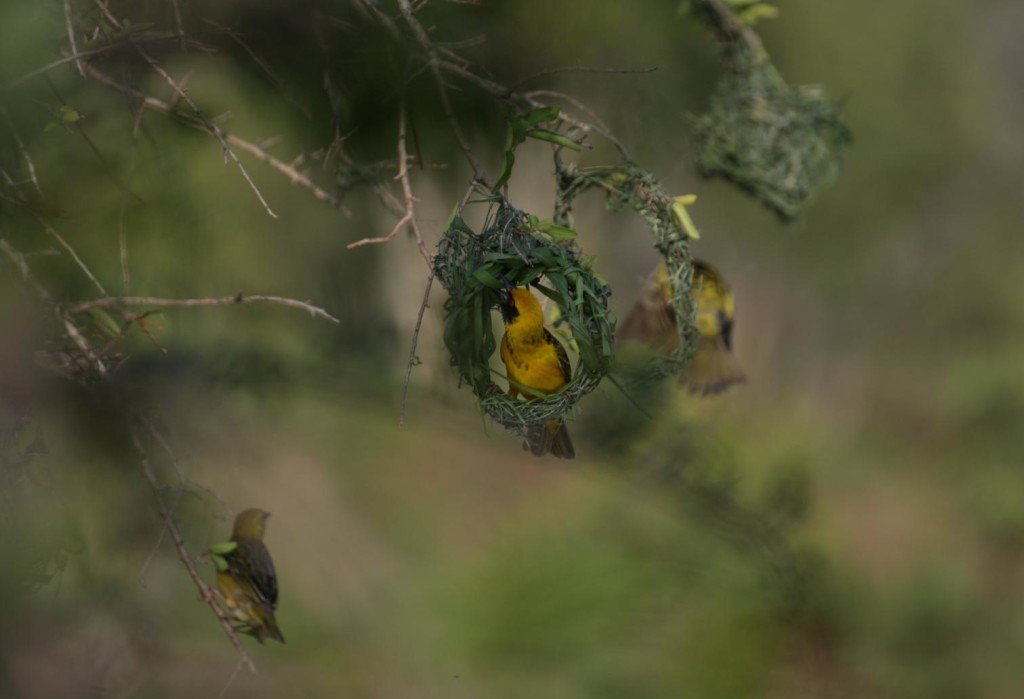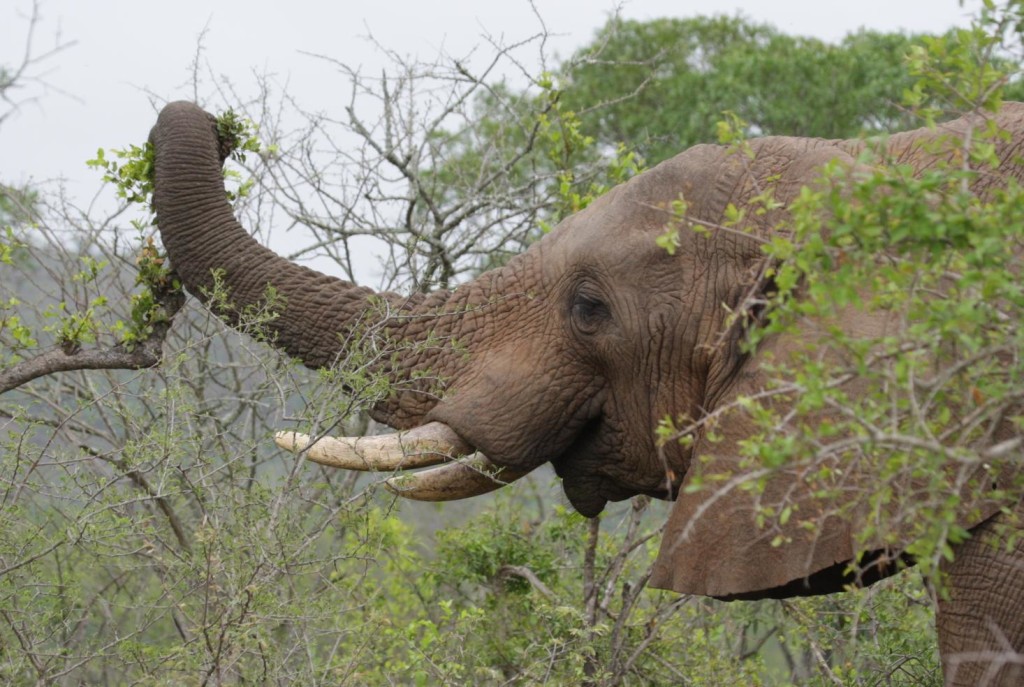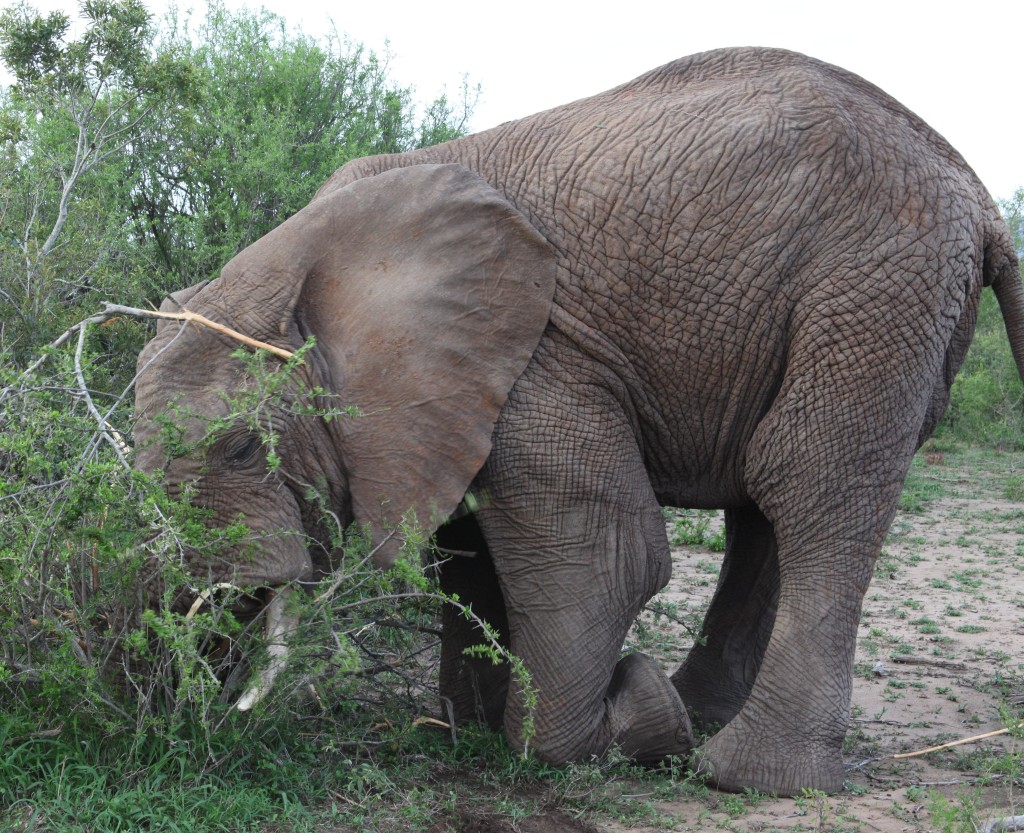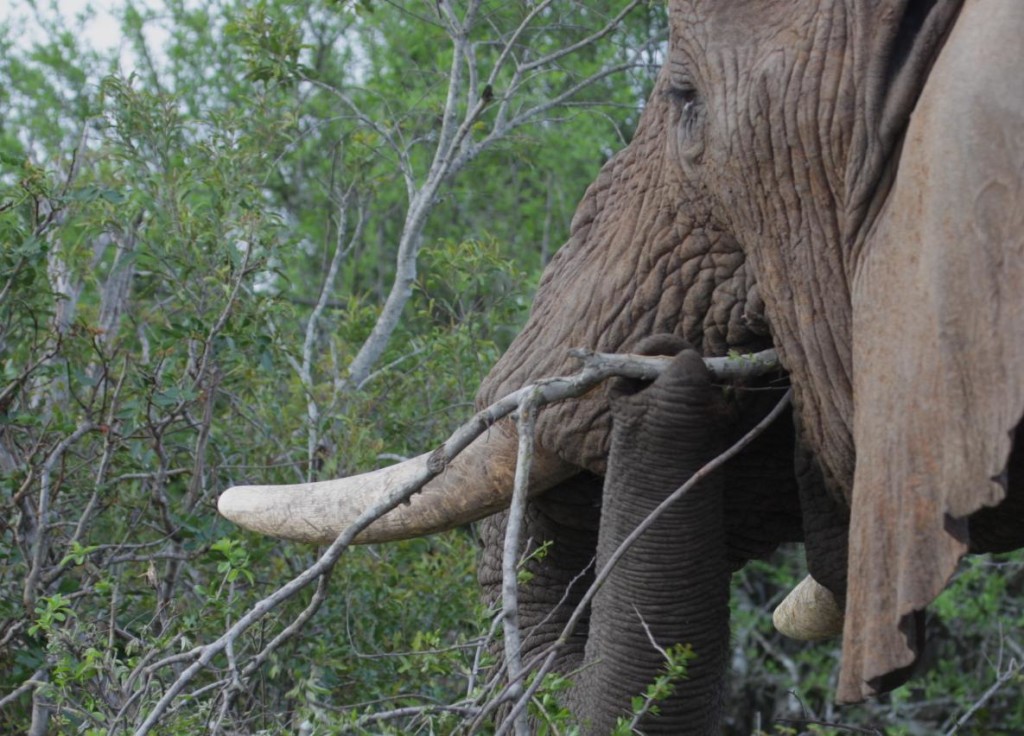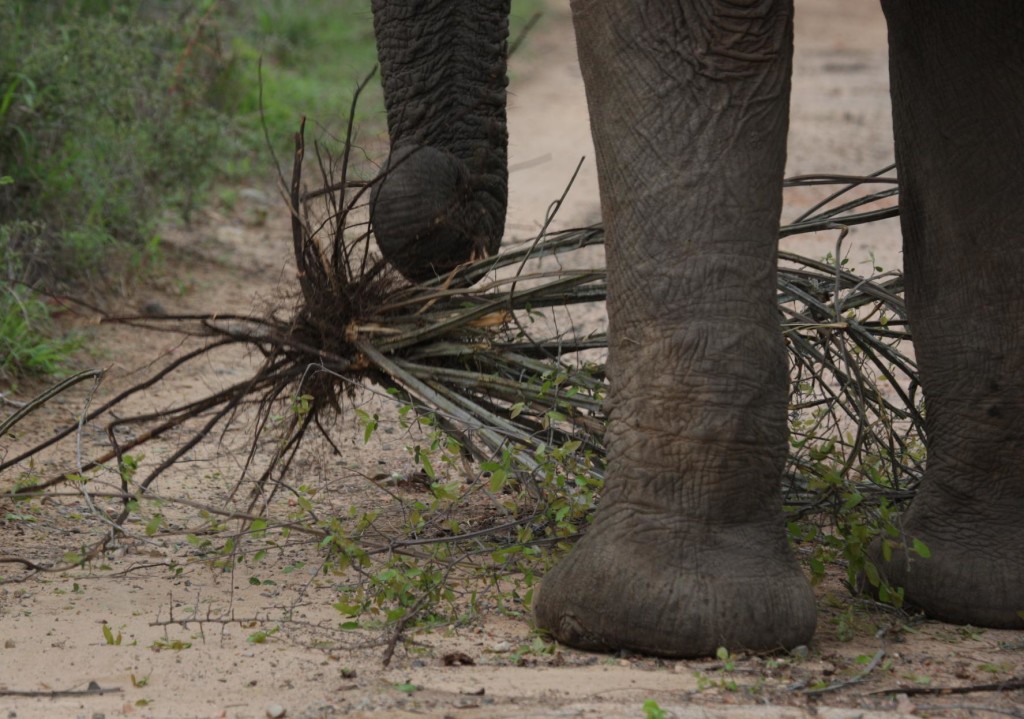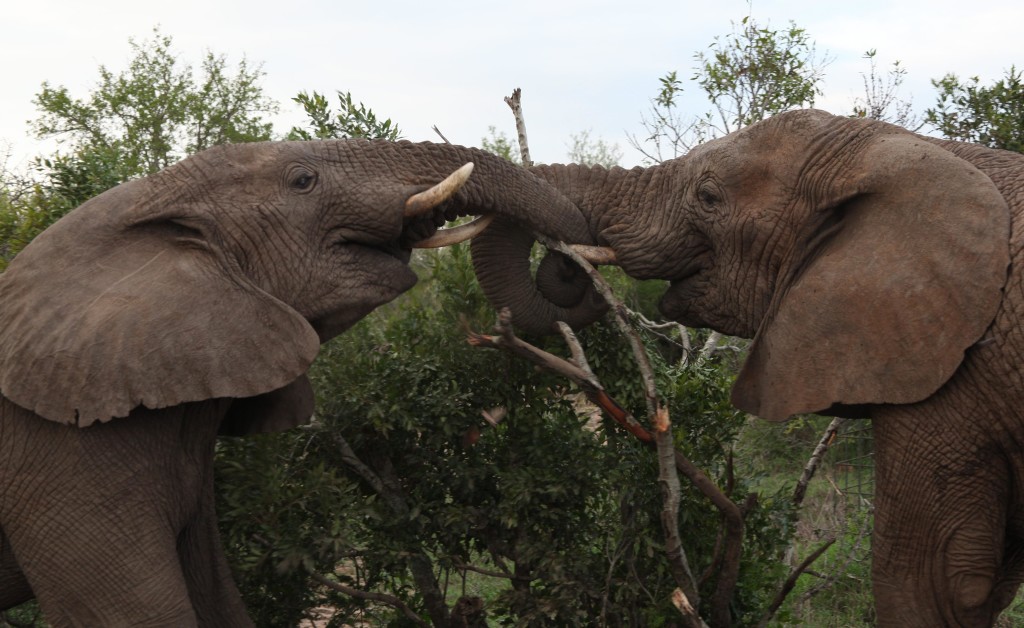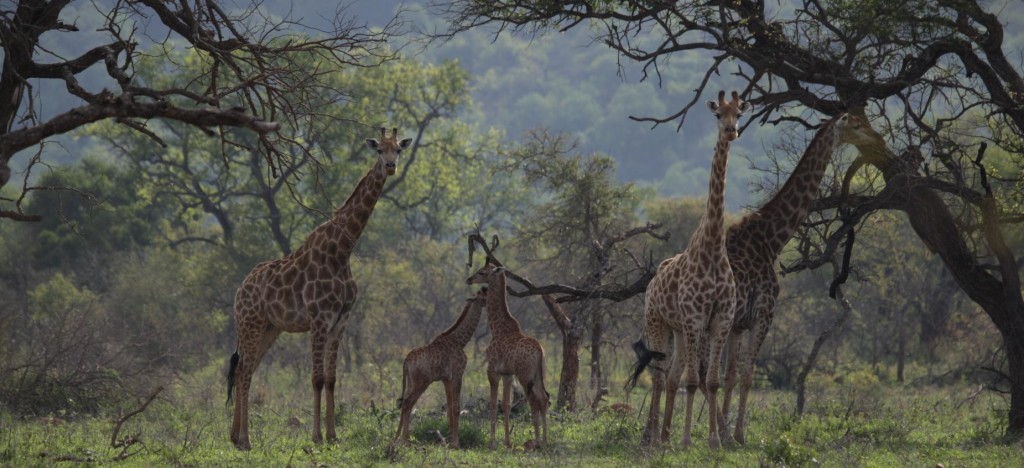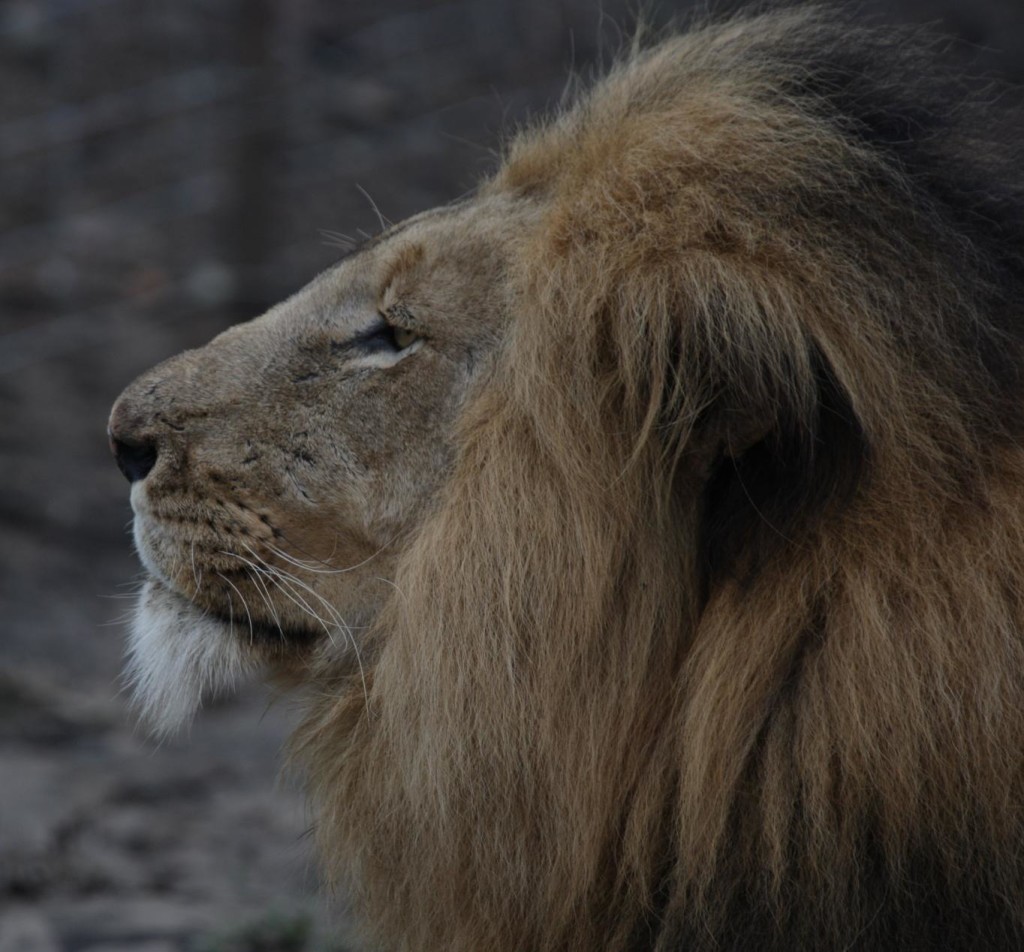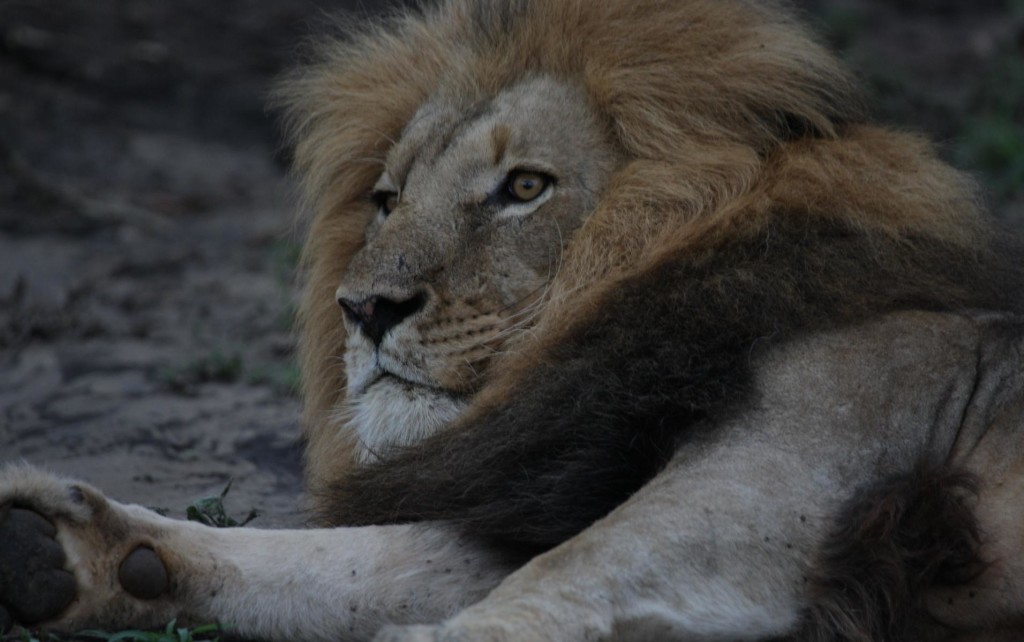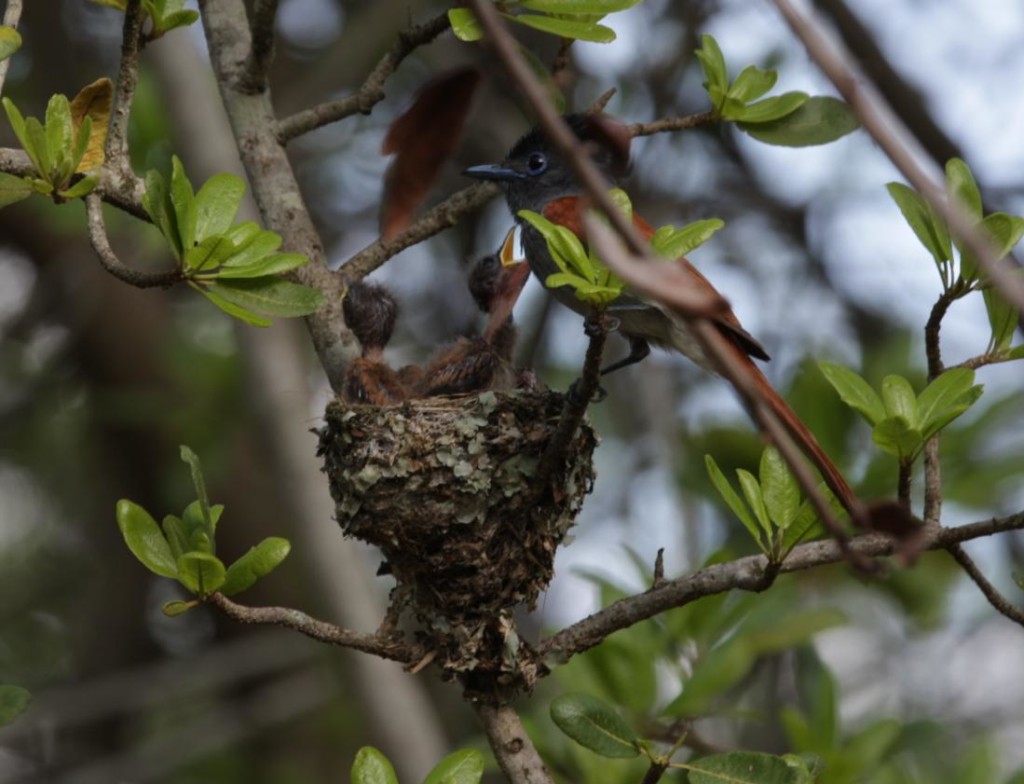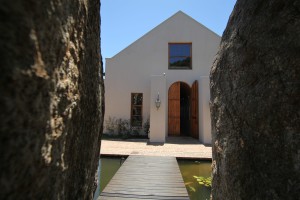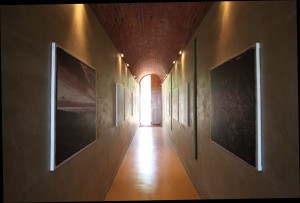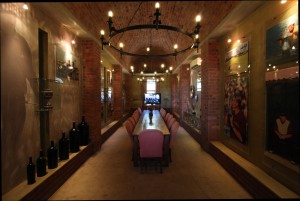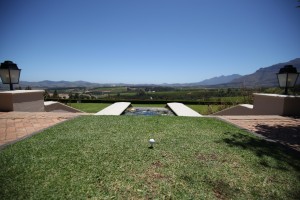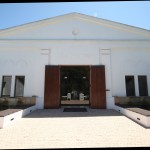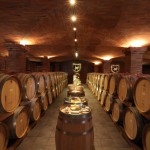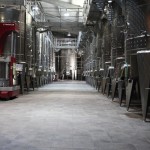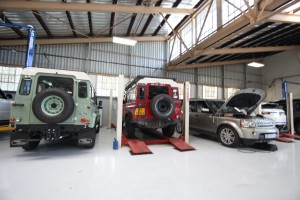We did not know very well what to expect from this once ‘terror state’, but we had heard Sudan was safe and the people were friendly.
And they were, right from the start. Just after crossing the border the people from the Sudan immigration office were about to start their break for breakfast, and invited us behind the counters to join. So, not sure if we could both mix in with the men only Jasper joined. But soon they brought Stephanie some foul as well, and offered both us a cup of tea – with loads of sugar of course.
Giving it a good push we reached Khartoum later that day, just when it was getting dark. Things got a little exciting as with the city in front of us the engine heated up. Apparently a small leak in the cooling system, but after adding some water we made it to the youth hostel where we camped in the court.
But, boy it was hot! At the end of May the temperature soared at highs of well over 40 degrees Celsius, and in the nights it cooled under 30 only for a couple of hours. To make things worse, the hostel was suffering from a power breakdown and could not provide electricity or water. And as we learned the next day we would have to wait for our Saudi transit visa for at least four days, we found an alternative in staying at the German Guesthouse. Quite pricey, but equipped with air conditioners, a pool, and a generator to provide these without interruption.
From there we went around town. To have our car fixed (we replaced the water pump as it was leaking from the seal) and to experience some of the Sudan-Arabic culture.

Of course we visited the so-called confluence of the White and Blue Nile. Unfortunately the smog and desert-dust in the air shielded us from a potentially nice view. And we went to the biggest souq of the country – in Omdurman, which is one of the three towns that make up Khartoum. Again we were invited for tea, and being white we mostly were an attraction for them, rather than the other way around.
Friday is the holy day for Muslims, and life mostly revolves around family. There is however one exception which are the “whirling dervishes”. In the afternoon several thousand people gather at the tomb of Sheikh Hamed al-Nil (a former Sufi leader) in Omdurman to watch or take part in the ritual Sufi dances. The ritual starts with two men chanting and walking in circles. Then the group collectively marches to the tomb before forming a large circle and the drums set in to provide an ever-increasing rhythm, driving the participants in a trance. Some of the ‘whirl’ of into the circle, spinning around – alone on their religious path.
On the next day we had a strange moment, as we had to say goodbye to each other: as the Saudis are not too fond of unmarried women travelling through their country Stephanie would fly directly to Amman in Jordan, while Jasper would cross the Red Sea by ferry and drive through Saudi Arabia with the car.
On Saturday morning -with the Saudi transit visa ready- we organised a ticket for the ferry, which would leave on Tuesday. That meant we would be separated for almost a week.
With Steef on the plane, in the afternoon I (Jasper) set off towards the Meroe pyramids. A nice stop on the way to Port Sudan. And a good place for a wild camp. As I arrived late, it was already getting dark and hard to find the exit from the main road, let alone the designated area for camping near the pyramids. But with not a single person or light for miles around I chose to camp right in front of the small ticket office near the entrance. And when I visited the pyramids early morning apart from a camel with driver there still was not a soul – let alone someone to sell me a ticket.
My next goal was Port Sudan, which was about 600 km away. But with some music on the car stereo and smooth roads through the desert I was making good progress. Until I heard a strange sound. Pufffff….
At first I thought it was part of the music. But then I felt the engine had lost some power. That must have been the turbo! But a quick look under the bonnet, in the soaring desert sun, did not reveal any obvious problems. And as the engine temperature and sound were normal, I continued my way. Only at a maximum speed of 80 km/h. Still pondering whether the sound could be a broken turbo, I also started counting whether this new top speed would be sufficient to make it through Saudi Arabia with only three days of transit allowed.
And then -still in the middle of nowhere- there was a fuel station. Not a desert mirage, but a true service station with diesel and -more importantly- some shadow. There another look in the engine compartment learned that the loss off turbo pressure was not due to a problem with the turbo itself, but with the intercooler hose which had come of partially. One of the many small problems we found after having repairs done to our car. Luckily this was an easy fix for me, and -after letting the engine cool off a bit, quite relative in the midst of the desert-I was underway again in minutes. With full diesel power!
On my way to Port Sudan I would come past Suakin, the port from where the ferry to Jeddah would leave. I decided to stop there for lunch, and have a look. And then things took a turn, and went into overdrive. Before turning into the village I was stopped by a guy asking me if I came for the ferry. “Yes, I do,” I replied. Leaving out that it was due only in two days. The guy happened to be from the ferry company, and immediately took me to their office to complete the last paperwork. Then he asked me to take him back to the road and send me of to the port. Was this really happening?
At the port I called the number of a contact I had been given to help me with the paperwork, and quickly stuffed some fruit and cookies in my mouth as a way of lunch. The whole bureaucratic circus at immigration and customs took a few hours, walking from one counter to the other – and back. But then, after an intensive check of the car and our luggage, I had my stamps and was summoned to the ferry. I parked the car and got aboard. So I was leaving today, two days earlier than scheduled!
And then there was the moment of really leaving Africa: from the deck I saw our car coming forward from the lines of waiting cars and being loaded onto the ship. After little over six months and 30.000 km we eventually left the continent. Bye Africa!

